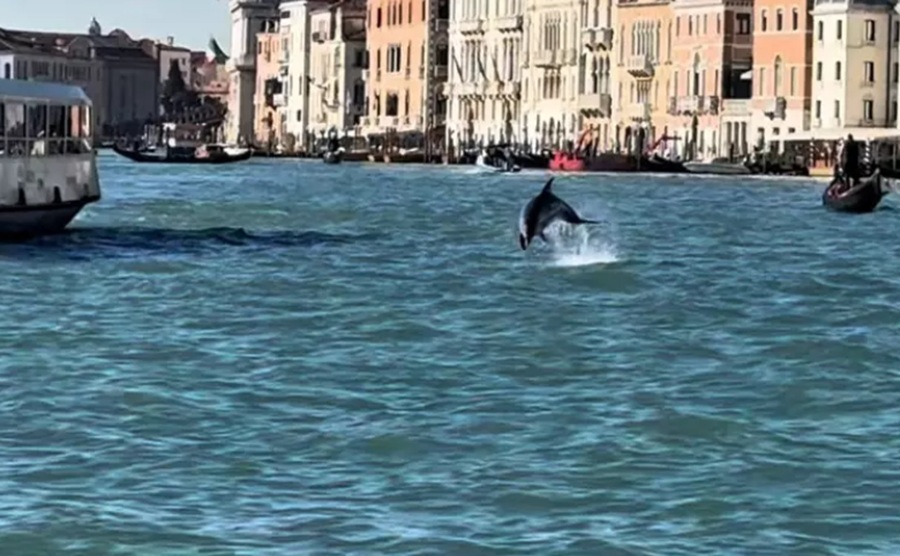A lone dolphin, affectionately named “Mimmo”, has made themself at home in the basin in front of the Basilica di San Marco in Venice. They appear unfazed by the flurry of water-taxis, gondolas and tour boats that constantly criss-cross the busy lagoon waters.
Mimmo first entered the lagoon in late June, according to local marine researchers. After authorities guided them out using a sonar device on Saturday, Mimmo had returned by Sunday.
Tourists delight as the dolphin leaps near the iconic architecture, their acrobatics contrasting with the ancient facades and quiet-gliding gondolas. But experts view their presence with concern. The dense vessel traffic, engine noise and propellers pose a serious risk to a wild cetacean unaccustomed to a crowded urban-water environment.
Marine biologists at the Natural History Museum of Venice say Mimmo is physically capable of returning to the open sea. Yet the dolphin chooses to stay, even when the escort boats leave the area. “This animal seems really sure of what it wants to do,” one expert said.
Mimmo’s refusal to depart sparks questions about how wild animals adapt to human-dominated spaces. Some environmental groups argue that the spectacle of their visits may encourage irresponsible behaviour: close-up selfies, boats converging to view them, even objects being thrown into the water.
As darkness and cooler waters of winter approach, researchers hope that fewer fish in the basin will draw Mimmo back to deeper sea. But no one pretends they can control the dolphin’s choice. For now, Venice offers a striking scene — a wild dolphin playing among gondolas and ancient stones — and a reminder that nature sometimes finds its way into the most unexpected of places.





